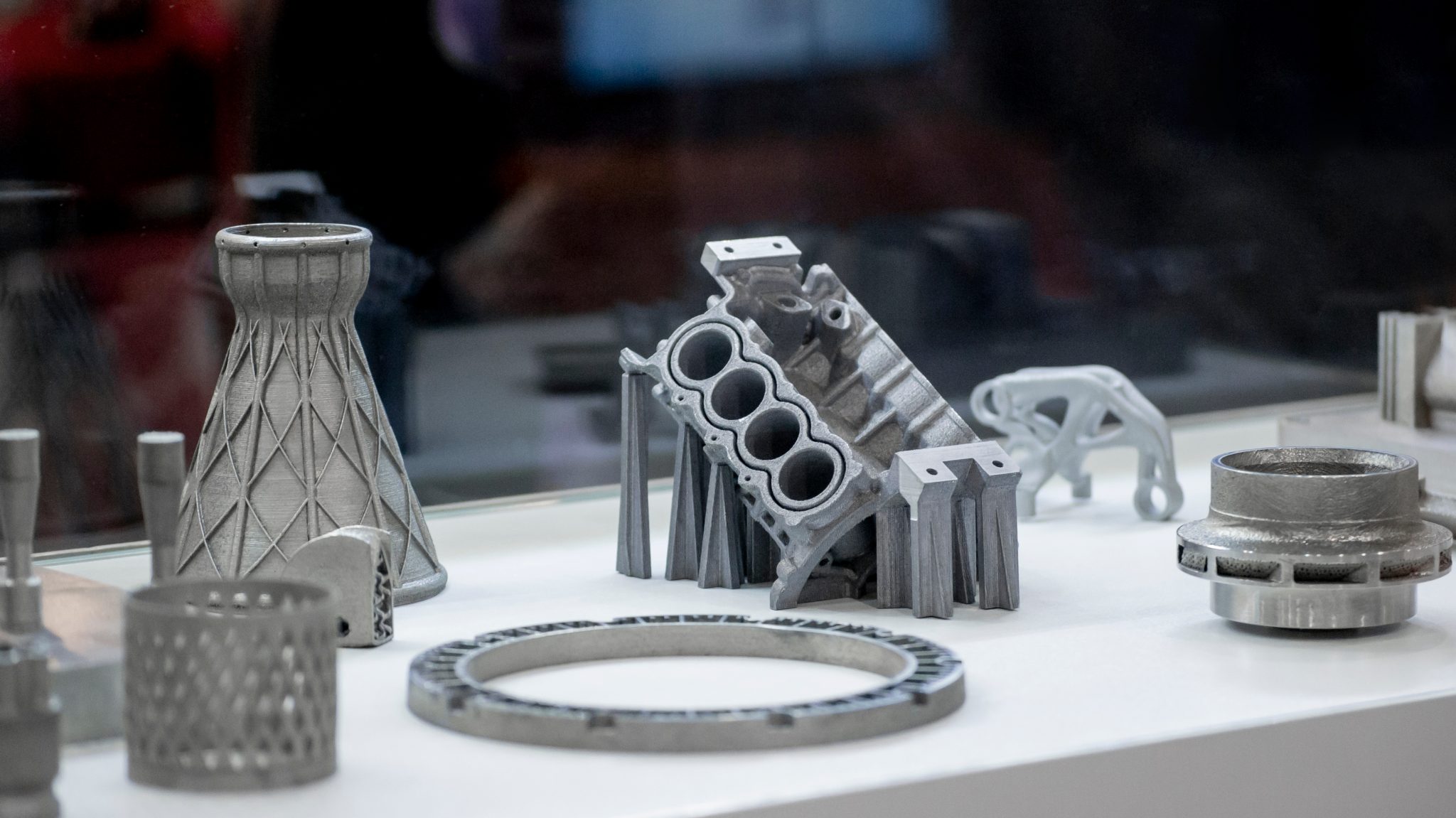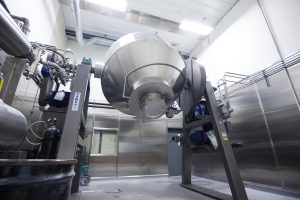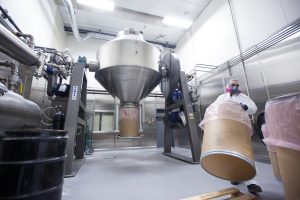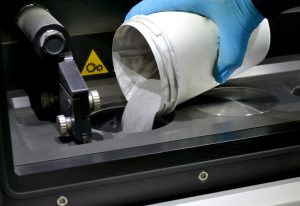
The global 3D printing metals market is growing and expected to reach USD 3.05 billion by 2025, according to a recent report by Grand View Research, Inc. However, to take full advantage of this growth and efficiently produce high-quality parts, powder producers, 3D printer manufacturers and others will need to ensure the consistent, repeatable quality of the metal powders used in the process.
3D printing applications range from aerospace, defense, and automotive to medical and jewelry. The metals involved can include aluminum, titanium, stainless steel, cobalt-chrome, copper or nickel alloys, and precious metals such as gold, silver, platinum, or palladium.
In the 3D printing process, parts are created from digital specifications by laying down successive layers of metal powder and using a laser to fuse the particles until the part is complete. Like ink-based printers, 3D printing has its own consumables – in this case, metal powder in extremely fine, sub-micron sizes.
 Although there are a wide range of metal powder suppliers, the industry is turning to contract powder processors for sophisticated heat treatments that improve the quality of the powder. As 3D printing techniques and equipment continue to advance, optimizing the powders with such heat treatments can improve powder flowability to prevent clogging, speed the process and produce a higher-quality part.
Although there are a wide range of metal powder suppliers, the industry is turning to contract powder processors for sophisticated heat treatments that improve the quality of the powder. As 3D printing techniques and equipment continue to advance, optimizing the powders with such heat treatments can improve powder flowability to prevent clogging, speed the process and produce a higher-quality part.
Optimizing Powder Quality
Most metal powders used in 3D printing, such as iron, nickel, cobalt, aluminum, and titanium alloys, are produced by gas atomization. In this process, a feedstock is melted in a crucible before it is ejected from a nozzle into a high-pressure gas stream. This breaks the molten metal into fine particles, typically under 50 – 150-microns in size.
While the metal powders produced by this process are typically spherically shaped, it is also important to address the porosity of the surface of the powder particles to improve “flowabililty.” Otherwise, the powder can clog or slow during the process, affecting the speed and quality of printing.
“For reliable 3D printing production, the powder must flow continuously and smoothly,” explains George Paffendorf, Director of Operations at Advanced Powder Solutions (APS), a contract manufacturer with extensive powder expertise. APS is the in-house testing/engineering arm of GEMCO, a leading manufacturer of tumble blending and vacuum tumble drying equipment. “However, uniform powder flow can be inhibited if the particles are rough or porous, which creates more friction.”
The attractive force between tiny, sub-micron size particles also increases as the particles become smaller. So, finer powders are typically less free flowing anyway, says Paffendorf.
From a quality standpoint, metal particle porosity can also reduce the load bearing, fracture toughness and fatigue properties of the finished part. Under cyclic stress conditions, it can also lead to cracks and part failure.
 To eliminate porosity and enhance flowability, Paffendorf says a growing number of proactive powder suppliers as well as 3D printer manufacturers are adding a heat treatment step in the manufacturing process that involves tumble dryers to achieve a more consistent, high quality product.
To eliminate porosity and enhance flowability, Paffendorf says a growing number of proactive powder suppliers as well as 3D printer manufacturers are adding a heat treatment step in the manufacturing process that involves tumble dryers to achieve a more consistent, high quality product.
As an example, APS utilizes advanced vacuum tumble dryers that provides sparging (gas injection) in addition to heat application. With this approach, a perforated tube is positioned under the bed of material and distributes a flow of inert gas such as nitrogen. This helps to circulate heat evenly amid the powder.
“A raw metal powder may have a porous, craggy outer surface,” says Paffendorf. “When we heat treat it in the tumble dryer, it closes up the pores so the particle is more spherical and flows more smoothly.”
The gas purge also provides a solution to protecting oxygen-sensitive or volatile powders, which can otherwise compromise certain alloy chemistries. When a blanket of inert gas is used to cover the material bed, it provides a protective barrier that prevents the powder from being exposed to atmospheric oxygen.
This also improves operator safety. Because 3D printing with metal powder can involve working with some materials like nickel that can be potentially dangerous to operators in powder form, containing these may be necessary to eliminate fire or explosion risk.
 Reconditioning Powder
Reconditioning Powder
From the 3D printer end user’s point of view, it is also important to efficiently reuse any unused metal powder at the bottom of the tray for the next print job because it is costly and cannot be wasted.
When this is necessary, vacuum tumble blenders from leading manufacturers like GEMCO can be used to re-blend the powder in with new material. Advanced tumble blenders are designed to apply even turbulence in all corners of the mix. This is accomplished through a combination of macro and micro blending that produces a better distribution.
Macro blending is achieved by rotating the shaped vessel, allowing the material bed to fall away from the vessel’s walls. The blender moves at a precise speed, with the vessel wall at a precise angle, so that the material cascades over itself. There is no additional force from paddles, plows, or spiral ribbons – just gravity.
While this occurs, micro mixing (if needed) simultaneously proceeds via agitator blades located in the mixing zone center of the vessel, where fine processing in the material transpires. Together, the macro and micro mixing evenly expose each particle to six times more active blending per revolution than traditional mixers.
Although the industrial 3D printing market primarily involves metal powders, the addition of a heat treatment step can improve part quality and manufacturing productivity in markets where plastic or resin-based powders are utilized as well.
Advanced Powder Solutions
301 Smalley Ave
Middlesex, NJ 08846 USA
(800) 654-3626
F: (732) 733-1175


















